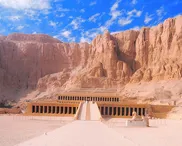The name of the city of Sodom has become a byword for sin. The city has passed into the realm of myth. But did this city really exist and is the story of its destruction at the hand of God a real, historical event? Questions like these matter to our defence of the reliability of the earliest passages of Scripture.
Theories about the lost cities of Sodom and Gomorrah have included claims that they lie beneath the waters of the Dead Sea or are identified with ruins at the southern end of the Dead Sea. But none of these suggestions have led to any solid evidence.
Location discovered?
Archaeologist Steven Collins has now published his claim to have found Sodom (Steven Collins and Latayne C. Scott, Discovering the City of Sodom, Howard Books, 2013) and submitted his evidence to a recent issue of The Biblical Archaeological Review (‘Where is Sodom? The Case for Tall el-Hammam’, March/April 2013). Tall (or Tel) el-Hammam in Jordan is a site north of the Dead Sea where his team have been excavating for eight years. Why is he persuaded that this is Sodom?









Comedy, free speech and warnings from the past
Hannah Arendt was a Jewish philosopher who grew up in Nazi Germany. Eventually she had to flee to France and, …